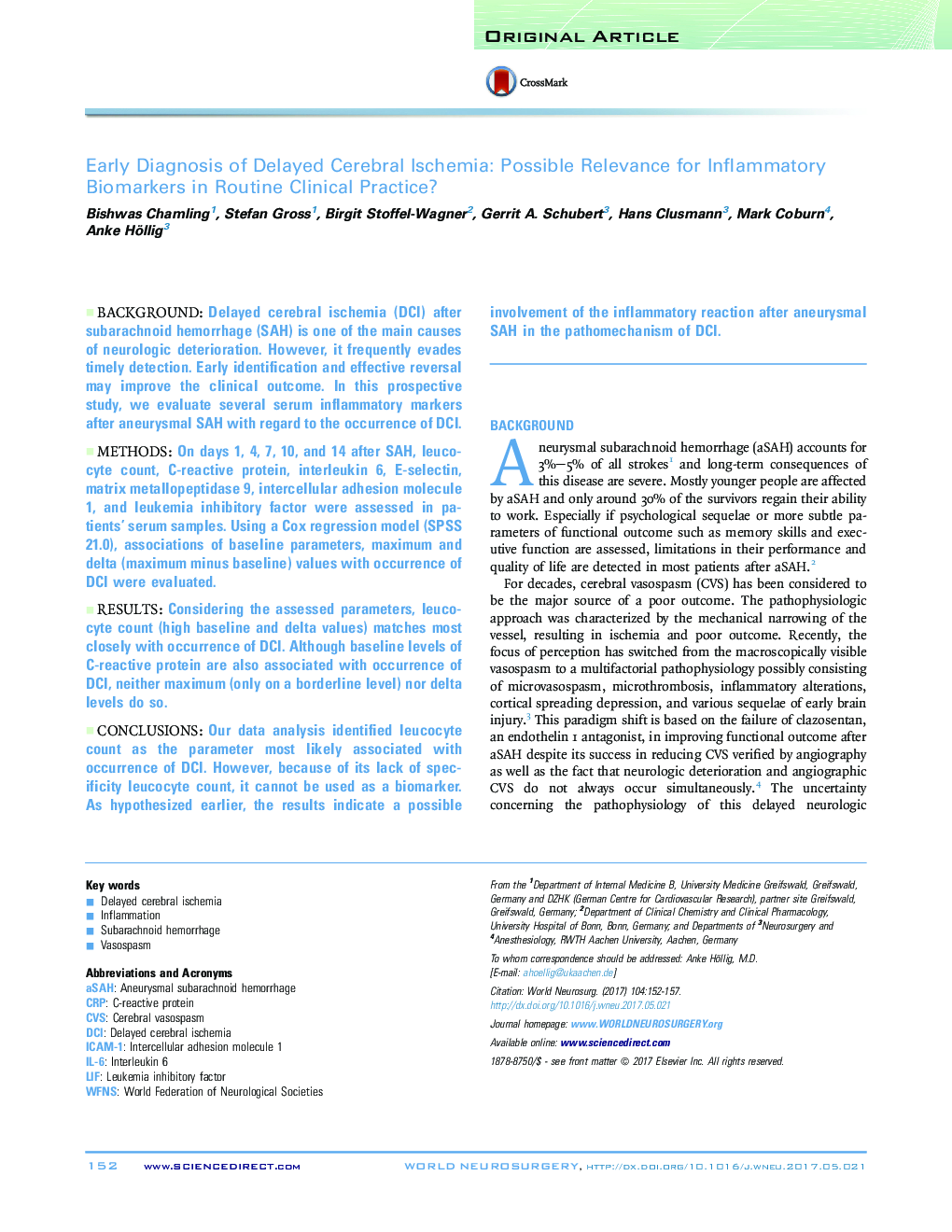| Article ID | Journal | Published Year | Pages | File Type |
|---|---|---|---|---|
| 5634412 | World Neurosurgery | 2017 | 6 Pages |
BackgroundDelayed cerebral ischemia (DCI) after subarachnoid hemorrhage (SAH) is one of the main causes of neurologic deterioration. However, it frequently evades timely detection. Early identification and effective reversal may improve the clinical outcome. In this prospective study, we evaluate several serum inflammatory markers after aneurysmal SAH with regard to the occurrence of DCI.MethodsOn days 1, 4, 7, 10, and 14 after SAH, leucocyte count, C-reactive protein, interleukin 6, E-selectin, matrix metallopeptidase 9, intercellular adhesion molecule 1, and leukemia inhibitory factor were assessed in patients' serum samples. Using a Cox regression model (SPSS 21.0), associations of baseline parameters, maximum and delta (maximum minus baseline) values with occurrence of DCI were evaluated.ResultsConsidering the assessed parameters, leucocyte count (high baseline and delta values) matches most closely with occurrence of DCI. Although baseline levels of C-reactive protein are also associated with occurrence of DCI, neither maximum (only on a borderline level) nor delta levels do so.ConclusionsOur data analysis identified leucocyte count as the parameter most likely associated with occurrence of DCI. However, because of its lack of specificity leucocyte count, it cannot be used as a biomarker. As hypothesized earlier, the results indicate a possible involvement of the inflammatory reaction after aneurysmal SAH in the pathomechanism of DCI.
